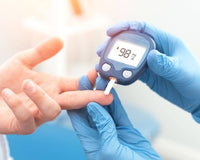Terbinafine And Alcohol, Uses, Side Effects, Dosage & Interactions
Terbinafine is a prescription medication used to treat fungal infections. It works by creating holes in the fungus’ cell membrane, which then kills the fungus. Terbinafine can be taken as an oral granule and as a tablet. In the following short article we discuss the uses, side effects, dosage, warnings, and interactions of terbinafine. We also review the relationship between terbinafine and alcohol.
Terbinafine Interactions
Some medications that may interact with terbinafine include: warfarin, drugs which affect liver enzymes that remove terbinafine from your body, azole antifungals such as fluconazole, drugs which are removed from your body by certain liver enzymes such as tricyclic antidepressants, SSRI antidepressants, dextromethorphan, thioridazine, drugs to treat heart rhythm problems, and monoamine oxidase inhibitors type B.
Terbinafine And Alcohol
Drinking alcohol while taking terbinafine is generally not advisable because it can lead to liver damage. Contact your doctor immediately if you have unusually dark urine while taking terbinafine. The appearance of dark urine can be a sign of liver damage from alcohol.
What Is Terbinafine?
Terbinafine is an antifungal medication that is often used to treat infections caused by fungus. It can be useful in alleviating fungal infections in many areas of the body, including the hair, toenails, fingernails, and hair follicles.
Terbinafine Brand Name
Terbinafine is available as a generic drug and as the brand name drug Lamisil.
Terbinafine Uses
Terbinafine belongs to the group of medications called antifungals. It is used to treat fungus infections of the scalp, body, groin, feet, fingernails, and toenails. Terbinafine is also able to treat tinea pedis (athlete's foot) and tinea cruris (jock itch).
How Does Terbinafine Work?
As an antifungal medication, terbinafine works by killing the fungus that causes infection. Terbinafine creates holes in the cell membrane of the fungus in order to kill them. Like other medications of its class, terbinafine inhibits squalene epoxidase, an enzyme that catalyzes the conversion of squalene to lanosterol. This helps to destroy the fungal infection by preventing fungus from procreating and spreading.
Terbinafine Dosage
Terbinafine is available as a granule and oral tablet. It is advisable to take both terbinafine tablets and granules with food and/or drink. Your dosage for terbinafine may depend on a variety of factor, including the following:
- Your age
- Your weight
- Strength of dosage
- Severity of infection
Terbinafine Dosage for Tinea Capitis
Adults: 250 mg once a day for 6 weeks.
Children 4 years of age and older and weighing over 35 kilograms (kg): Dose is based on body weight and must be determined by your doctor. The dose is usually 250 mg once a day for 6 weeks.
Children 4 years of age and older and weighing 25 kg to 35 kg: Dose is based on body weight and must be determined by your doctor. The dose is usually 187.5 mg once a day for 6 weeks.
Children 4 years of age and older and weighing less than 25 kg: Dose is based on body weight and must be determined by your doctor. The dose is usually 125 mg once a day for 6 weeks.
Terbinafine Dosage for Tinea Pedis
Adults: 250 mg once a day for 2 to 6 weeks.
Terbinafine Dosage for Tinea Cruris
Adults and Teenagers: 250 mg once a day for 2 to 4 weeks.
Terbinafine Dosage for Onychomycosis
Adults: 250 mg once a day for 12 weeks.
Terbinafine Side Effects
Terbinafine does have some associated side effects. Some side effects are more serious and less common than others.
Common Side Effects
Common side effects of terbinafine include:
- Indigestion
- Itching
- Nausea
- Constipation
- Diarrhea
- Headache
- Changes in sleep patterns
- Loss of energy
- Disinterest in daily activities
If these side effects are mild, they may disappear within a few days. If you have stopped taking your medication and the effects are still present, talk with your doctor or pharmacist.
Serious Side Effects
Contact your doctor immediately if you experience any of the following serious side effects.
- Extreme tiredness
- Swollen lymph glands
- Pale stools
- Dark urine
- Pain in the upper right part of the stomach
- Chest pain
- Blood in urine
- Fast or irregular heartbeat
- Mouth sores
- Loss of skin color
Disclaimer: Here at Manifest Pharmacy, our goal is to provide you with the most relevant and current information. However, because drugs affect each person differently, we cannot guarantee that this information includes all possible side effects. This information is not a substitute for medical advice. Always discuss possible side effects with a healthcare professional who knows your medical history.
Terbinafine And Alcohol, Uses, Side Effects, Dosage & Interactions: Summary
Terbinafine is a prescription medication used to treat fungal infections. It may be helpful in alleviating fungal infections in many areas of the body, including the hair, toenails, fingernails, and hair follicles.
Terbinafine is available as a granule and oral tablet. It works by damaging the cell membranes of fungi in order to kill them and stop the infection from spreading.








